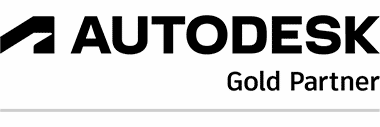
As the world continues to recover from the effects of the pandemic, organizations are struggling to bring employees back into the office. Remote work has become the norm for many, and it is no secret that many employees do not want to give up the level of flexibility that working remotely has provided them. So, how can workplace leaders encourage these employees to return to the workplace? The answer lies in consistent, data-driven optimization of your portfolio.
To help you strategize your next workplace initiatives, we will explore three expert-curated strategies to get people back into the office and create a more dynamic, collaborative, and effective workplace.
1. Force high usage by shutting down areas
With global occupancy rates hovering around 12%, it continues to be difficult to uncover how employees want to work. Though this strategy will not directly lead to more employees returning to office, forcing high usage through strategic area shutdowns and consolidation is the foundation of building an office that employees will want to return to. By temporarily shutting down specific spaces, floors, or even entire buildings, you will create higher usage rates in the remaining areas that will uncover more pronounced insights into employee preferences, behaviors, and patterns.
A neighborhood or team-specific approach can be highly effective in this context. By assigning specific days for different teams or departments to work in the consolidated office, organizations can encourage team collaboration and foster a sense of belonging while creating a deeper understanding of occupancy patterns and trends, especially those from team to team.
To explore this strategy, you need to first determine what areas of your workplace you should shut down. Utilize the following steps as a good foundation for how you can make this decision with intent:
- Define your objectives: Clearly articulate the goals you aim to achieve through this experiment. Are you looking to swap unused space types for new ones? Do you want to realize the impact of design on space usage? Identifying your objectives will help guide your decision-making process.
- Analyze your occupancy data: If you have an existing means of data for your workplace, such as an Occupancy Intelligence Platform, utilize its data to analyze occupancy patterns. Look for trends such as underutilized floors and space types. Also, keep in mind your build’s total capacity usage to help determine how many spaces you can reasonably shut down without causing overcrowding.
- Prioritize based on potential ROI: Rank the floors and spaces you want to remain open based on their potential for generating pronounced insights. As general guidance, closing down an equal balance of popular and unpopular spaces can give you a better idea of how employees would behave in a smaller office space. Closing down the most unpopular spaces can create more pronounced insights as to what popular spaces employees enjoy the most and why they are so greatly enjoyed.
By experimenting with workplace availability and analyzing the resulting data, organizations can better understand how to optimize their office space for employee preferences and productivity.
2. Prioritize optimizing for collaboration, design, and well-being
Organizations must focus on creating office experiences that make commuting worthwhile. To achieve this, prioritize optimizing collaborative spaces, as collaboration is one of the primary motivators for employees to work in-office and it helps enhance company culture. Design is also regarded as one of the most inspiring factors for employees to make the commute.
Though it may not directly correlate to more employees coming into the office, well-being must be at the forefront of your strategy too, as transitioning from remote to hybrid/in-person work can be difficult for employees. By offering spaces that focus on wellness, organizations have the opportunity to build an empathetic work culture through the built workplace.
Optimize for collaboration
- Provide a diverse range of collaborative spaces: Offer a mix of open and private collaborative areas, meeting rooms, and huddle spaces to address various collaboration styles.
- Equip spaces with advanced collaboration tools: Incorporate technology-enabled solutions in collaborative spaces, such as interactive whiteboards, video conferencing systems, and space availability kiosks.
- Encourage team bonding and informal interactions: Create comfortable social spaces, such as lounges and cafes, to promote spontaneous conversations and team-building activities away from the traditional office setting.
Optimize for design
- Create inspiring and visually appealing workspaces: Incorporate natural lighting, modular furniture, and unique decor to create a beautiful and inspiring in-office experience.
- Reflect company culture and values through design: Use design elements that align with the organization’s values and culture, such as branding, colors, and themed spaces, to inspire pride in employees and reinforce a sense of identity.
- Implement sustainable design elements: Integrate natural elements, such as plants, greenery walls, natural materials, and water features, to enhance employee well-being and create an office space that is environmentally friendly.
Optimize for well-being
- Focus on employee comfort: Invest in ergonomic furniture, standing workstations, and adjustable temperature/lighting controls to provide employees with comfortable, customizable environments.
- Provide health-oriented spaces and initiatives: Offer on-site wellness programs and facilities, such as gyms, yoga rooms, meditation spaces, mother’s rooms, nap pods, and quiet spaces to promote employee physical and mental well-being while in the office.
- Encourage movement: Design the office layout to promote movement, such as strategically located break rooms and social areas, to stimulate circulation and prevent sedentariness.
Regularly seek employee feedback and continuously adapt and adjust to evolving employee needs. Open lines of communication and a willingness to improve the office environment can foster a strong sense of belonging and commitment among employees.
3. Utilize artificial intelligence (AI)
In today’s fast-paced and ever-changing world, harnessing the power of artificial intelligence has given businesses additional tools to help them stay ahead of the curve. AI has proven to be a game-changer, revolutionizing work processes and enabling faster, easier, and more confident decision-making. From writing emails to coding and writing spreadsheet formulas, AI streamlines tasks across all job functions and industries.
The use of AI in the workplace industry can help further transform the decision-making process from being assumptions-based and time-consuming, to being data-driven and fast-paced. Just recently, VergeSense announced their collaboration with ChatGPT to leverage AI in analyzing workplace occupancy data, resulting in quicker and more confident decision-making without needing to manually analyze data.
By utilizing AI in your workplace to streamline data analysis and decision-making, you can better adapt to every-changing employee needs and build a workplace built on your workforce’s actual behaviors.
Create data-driven results
As the post-pandemic workplace continues to evolve, organizations have a unique opportunity to reshape their office spaces by building strategy and decisions around employee experience. By experimenting with workplace availability, optimizing spaces for the ideal in-office experience, and utilizing AI for data-driven decision making, organizations can create a greater demand for in-office work and foster a more dynamic, collaborative, and innovative working environment.
![RCS-FM-spaced-2[1]](https://www.robotechcad.com/wp-content/uploads/2022/08/RCS-FM-spaced-21.png)


